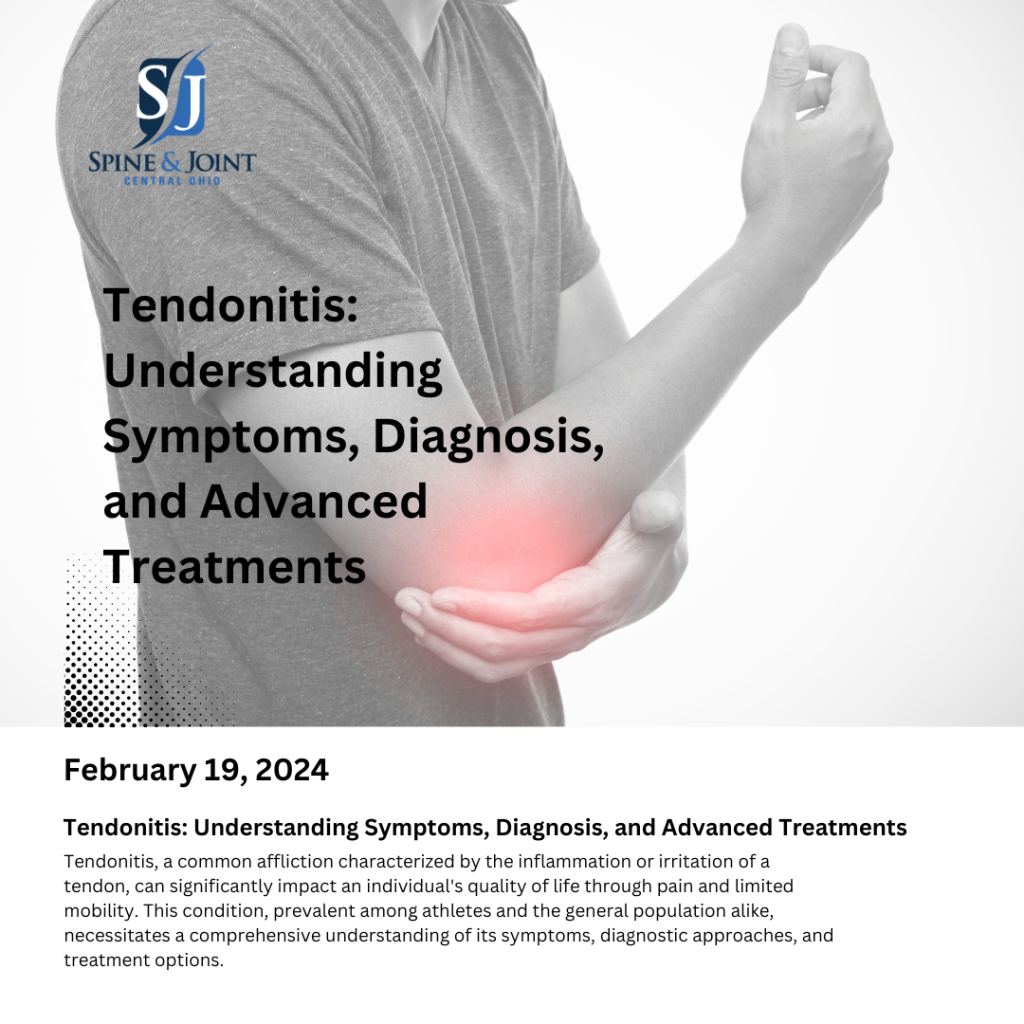Tendonitis, a common affliction characterized by the inflammation or irritation of a tendon, can significantly impact an individual’s quality of life through pain and limited mobility. This condition, prevalent among athletes and the general population alike, necessitates a comprehensive understanding of its symptoms, diagnostic approaches, and treatment options. In this blog post, we delve into the intricacies of tendonitis, highlighting the efficacy of treatments such as progressive overload, dry needling, and shockwave therapy.
Symptoms of Tendonitis
Tendonitis manifests through a variety of symptoms, the intensity of which can vary based on the affected tendon’s location and the severity of the inflammation. Common indicators include:
- Pain at the Tendon Site: Often described as a dull ache, particularly when moving the affected limb or joint.
- Swelling: Mild to moderate swelling can occur, sometimes accompanied by heat and redness.
- Stiffness: This leads to a restricted range of motion in the involved joint.
- Tenderness: The area may be sensitive to touch or pressure.

Recognizing these symptoms early can lead to more effective management and treatment of tendonitis.
Diagnosing Tendonitis
Diagnosis typically begins with a thorough medical history review and physical examination. Healthcare providers may perform specific tests to assess pain and mobility. In some cases, imaging tests such as MRI or ultrasound are recommended to rule out other conditions and confirm the diagnosis of tendonitis.
Advanced Treatments for Tendonitis
Progressive Overload
Progressive overload, a principle widely recognized in physical therapy and exercise science, involves gradually increasing the stress placed on the tendon through exercise. This method encourages tendon strengthening without overexertion. Key components include:
- Starting Slowly: Begin with low-intensity exercises that minimally stress the tendon.
- Gradual Increase: Slowly increase the exercise intensity, allowing the tendon to adapt and strengthen over time.
- Monitoring: Regularly assess pain and adjust the intensity to avoid exacerbating the condition.
Dry Needling
Dry needling has emerged as a potent treatment for tendonitis, targeting trigger points or tight bands within muscles that contribute to pain and inflammation. This technique involves:
- Inserting Thin Needles: Practitioners insert fine needles into the skin and muscle directly at the trigger point.
- Relieving Muscle Tension: The needle helps release the knot, alleviating pain and improving mobility.
- Stimulating Healing: Dry needling can increase blood flow to the area, promoting healing.
Shockwave Therapy
Shockwave therapy offers a non-invasive alternative for treating tendonitis, particularly for chronic cases resistant to conventional treatments. This therapy works by:
- Delivering Shockwaves: High-energy acoustic waves are directed at the affected area, stimulating the body’s natural healing processes.
- Breaking Down Calcifications: Shockwaves can help dissolve calcified deposits in tendons that contribute to pain.
- Promoting Collagen Production: The process encourages the production of collagen, essential for tendon repair.
Conclusion
Tendonitis, while a common issue, requires a nuanced approach for effective management and treatment. Understanding the symptoms and securing an accurate diagnosis are crucial first steps. From there, employing advanced treatment strategies such as progressive overload, dry needling, and shockwave therapy can offer significant relief and promote healing. As with any medical condition, consultation with healthcare professionals is essential to determine the most appropriate treatment plan for your specific situation. Through informed strategies and innovative treatments, overcoming tendonitis and regaining optimal function is within reach.

Recent Comments